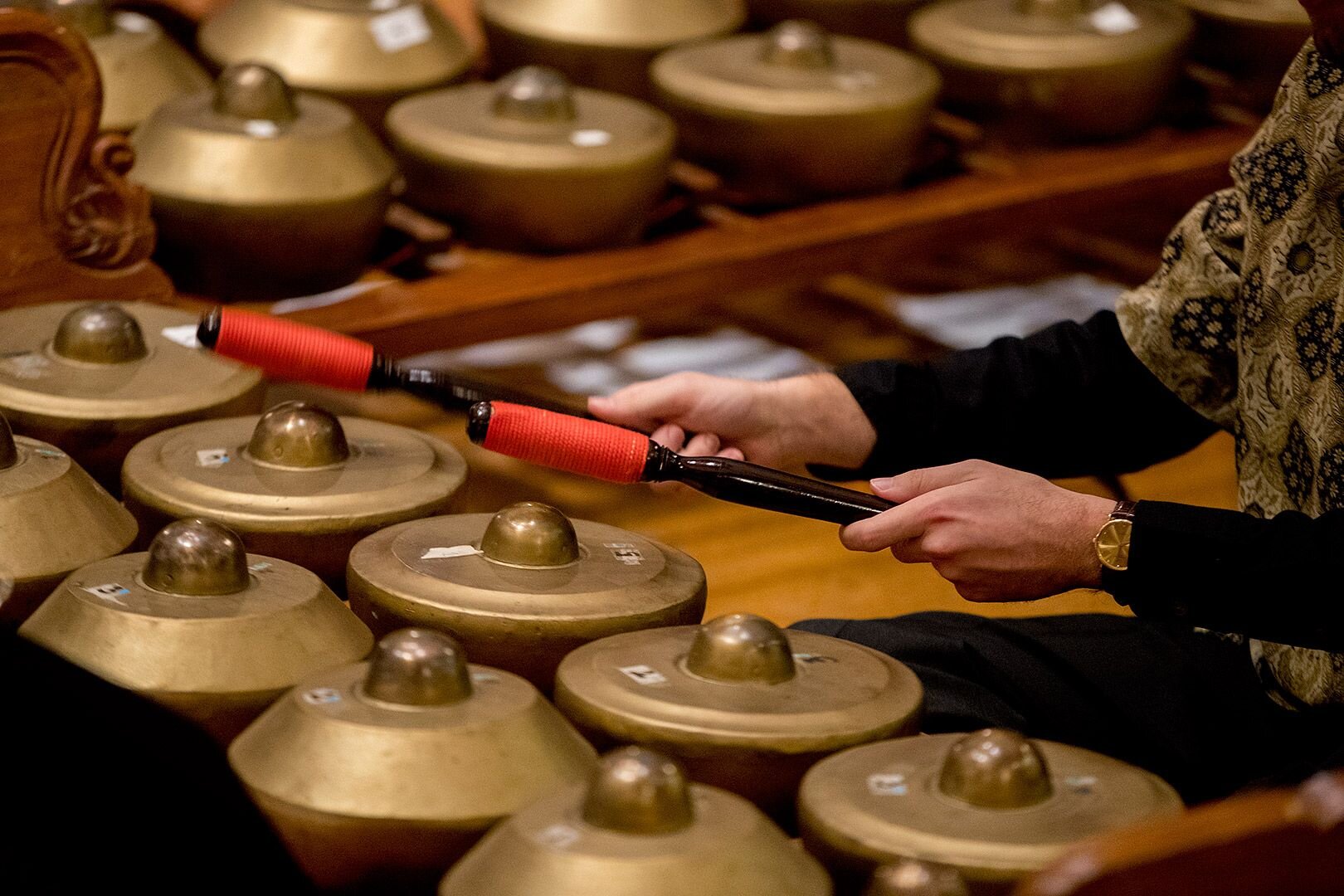
Gamelan is a traditional ensemble music from Indonesia, primarily from the islands of Java and Bali. It features a variety of instruments such as metallophones, xylophones, drums, and gongs. Gamelan music is deeply rooted in Indonesian culture, often accompanying dance, wayang puppet performances, and rituals. The intricate rhythms and melodies create a mesmerizing soundscape that has fascinated listeners worldwide. Did you know that each Gamelan orchestra is unique, with instruments tuned specifically for that set? This means you can't mix and match instruments from different ensembles. Dive into these 31 intriguing facts about Gamelan to uncover more about its history, instruments, and cultural significance.
What is Gamelan?
Gamelan is a traditional ensemble music from Indonesia, primarily from the islands of Java and Bali. It features a variety of instruments such as metallophones, xylophones, drums, and gongs. The music is deeply rooted in Indonesian culture and often accompanies dances, rituals, and ceremonies.
-
Gamelan is derived from the Javanese word "gamel," which means to strike or hammer. This reflects the primary method of playing the instruments.
-
The ensemble typically includes instruments made of bronze or iron, creating a unique, resonant sound.
-
Gamelan music is often used in traditional Indonesian ceremonies, including weddings and religious rituals.
Instruments in Gamelan
The instruments in a Gamelan ensemble are diverse and each has a specific role. They work together to create the intricate layers of sound that define Gamelan music.
-
Metallophones are a key component, consisting of metal bars struck with mallets.
-
The kendang is a double-headed drum that sets the tempo and rhythm.
-
Gongs of various sizes are used, each producing a different pitch and resonance.
-
Suling is a bamboo flute that adds a melodic layer to the ensemble.
-
The rebab is a two-stringed fiddle that often leads the melody.
Cultural Significance
Gamelan is more than just music; it is a vital part of Indonesian culture and history. It plays a significant role in various aspects of life.
-
Gamelan music is often played during wayang kulit, traditional shadow puppet performances.
-
In Bali, Gamelan accompanies kecak, a form of dance and music drama.
-
The music is believed to have spiritual significance, often used in rituals to communicate with deities.
-
Gamelan is also used in topeng dance, where performers wear masks to tell stories.
Gamelan in Modern Times
Despite its ancient origins, Gamelan continues to evolve and influence modern music and culture.
-
Many contemporary composers incorporate Gamelan elements into their works.
-
Gamelan ensembles can be found in universities and music schools worldwide.
-
The music has influenced Western composers like Claude Debussy and John Cage.
-
Gamelan is often featured in international music festivals, showcasing its global appeal.
Learning Gamelan
Learning to play Gamelan is a communal activity, emphasizing cooperation and listening skills. It is often taught in groups rather than individually.
-
In Indonesia, children often start learning Gamelan at a young age.
-
Many schools and community centers offer Gamelan classes to promote cultural heritage.
-
Learning Gamelan involves understanding the intricate rhythms and interlocking patterns.
-
It is common for students to switch instruments, gaining a comprehensive understanding of the ensemble.
Unique Characteristics
Gamelan music has several unique characteristics that set it apart from other musical traditions.
-
The tuning system, known as slendro and pelog, is different from Western scales.
-
Gamelan music often features cyclical patterns, with pieces repeating in loops.
-
The ensemble plays without a conductor, relying on cues from the lead drummer.
-
Each Gamelan set is unique, with instruments tuned to each other rather than a standard pitch.
Gamelan and Dance
Dance is an integral part of Gamelan performances, with music and movement closely intertwined.
-
Legong is a traditional Balinese dance performed to Gamelan music.
-
Bedhaya is a sacred Javanese dance that tells stories through intricate movements.
-
Barong dance depicts the battle between good and evil, accompanied by Gamelan.
-
Gamelan music often dictates the pace and mood of the dance, creating a harmonious blend of sound and movement.
Preservation and Revival
Efforts are being made to preserve and revive Gamelan music, ensuring it remains a vibrant part of Indonesian culture.
-
Organizations like the Indonesian Institute of the Arts work to document and teach Gamelan traditions.
-
Digital archives and recordings help preserve the music for future generations.
-
Festivals and competitions encourage young musicians to engage with Gamelan, keeping the tradition alive.
The Enduring Magic of Gamelan
Gamelan isn't just music; it's a cultural treasure. Its unique sounds and rich history have fascinated people for centuries. From the intricate instruments to the deep-rooted traditions, Gamelan offers a glimpse into the soul of Indonesian culture. Whether you're a music lover or a history buff, there's something captivating about this art form.
Understanding Gamelan means appreciating the harmony between musicians, the craftsmanship of the instruments, and the stories behind the melodies. It's a reminder of how music can bring people together, transcending language and borders. So next time you hear the mesmerizing sounds of a Gamelan orchestra, take a moment to appreciate the centuries-old tradition that continues to enchant audiences around the world.
Was this page helpful?
Our commitment to delivering trustworthy and engaging content is at the heart of what we do. Each fact on our site is contributed by real users like you, bringing a wealth of diverse insights and information. To ensure the highest standards of accuracy and reliability, our dedicated editors meticulously review each submission. This process guarantees that the facts we share are not only fascinating but also credible. Trust in our commitment to quality and authenticity as you explore and learn with us.
